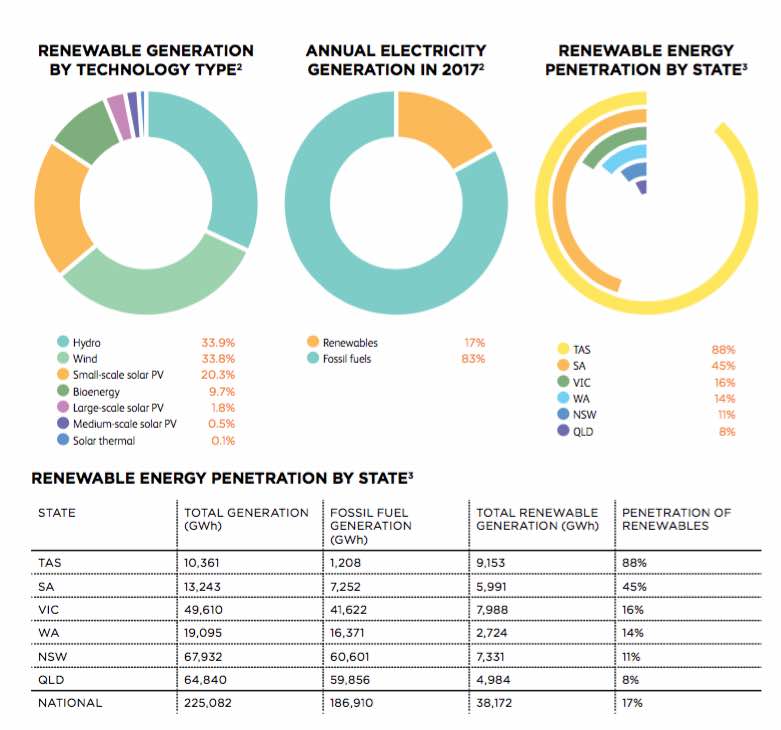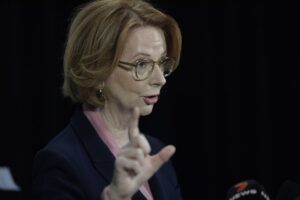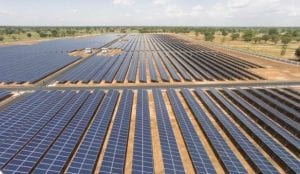The Clean Energy Council has detailed a year of remarkable deal-making and record-smashing project activity in Australia’s large-scale solar and wind sectors in its latest annual snapshot of the national clean energy market.
The Clean Energy Australia Report 2018, published on Wednesday, looks back at a 2017 where 16 large-scale renewable energy project, totalling around 700MW of new generation capacity, were completed and connected to the National Electricity Market.
Among those, four large-scale solar projects were completed in 2017, taking Australia’s total installed large-scale solar capacity to 450MW at the end of the year, from just 34MW at the end of 2014 (see chart below).
For the wind sector, the 547MW of new capacity added in 2017 was the third highest amount added in the history of the Australian industry, bringing total generation capacity across the country to 4816MW.
 Fifteen new wind farms were either under construction or financially committed at the end of 2017, the report said.
Fifteen new wind farms were either under construction or financially committed at the end of 2017, the report said.
In dollar terms, the CEC says this large-scale wind and solar project activity pushed investment in Australia up 150 per cent to a record $US9 billion for the year.
On the smaller scale, almost 1.1GW of solar PV was installed on Australian home and business rooftops in 2017 – another record broken. And perhaps even more exciting is the news that of the 172,000 household PV installations in 2017, 12 per cent included a battery – up from just 5 per cent in 2016.
And while 2017 was a record year, CEC chief Kane Thornton says it is “just a glimpse” of what is shaping up to be an unprecedented level of activity in the next couple of years.
“Perhaps most significantly, the large-scale renewable projects either under construction or which had attracted finance add up to more than seven times the amount of work completed in 2017,” he said in comments at the launch of the 2018 report.
“These 50 projects add up to 5300MW of new capacity and 5750 direct jobs.”
But it’s not all rainbows and sunshine.
As we report here, both the CEC and the Smart Energy Council are deeply concerned that the federal government’s National Energy Guarantee, as it stands, does nowhere near enough to encourage investment in renewable energy, beyond 2020.
“There are now enough projects in the system to meet the 2020 Renewable Energy Target (RET),” said Thornton in comments on Wednesday.
“Given we were only about halfway to the large-scale target at the beginning of 2017, it shows the remarkable level of deal-making and project activity during the year.
“However, it also shows that long-term bipartisan policy has been critical for investment in the energy sector, and that policy certainty beyond 2020 is becoming increasingly urgent.”















